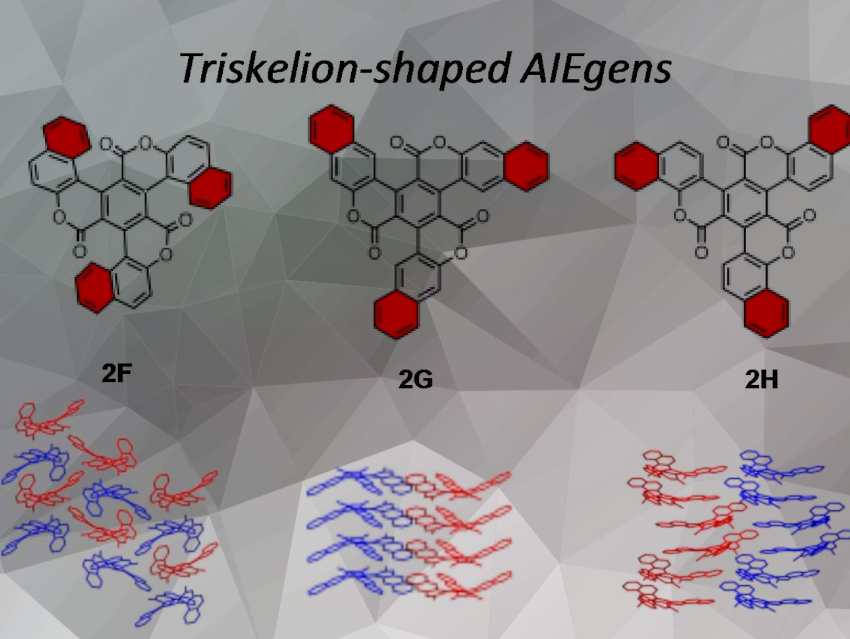Coumarin (2H-chrome-2-one) is a naturally occurring aromatic lactone and bioorganic compound found in various forms in plants and animals. Its structure holds promise for developing both bioorganic and purely organic functional materials. Specific derivatives of coumarin show notable fluorescence emission alongside biological activity. The slight structural differences among fluorescent coumarin derivatives lead to aggregation-induced emission (AIE) behavior, making the diverse structural landscape of fluorescent coumarins attractive for the development of bioorganic optical materials. Moreover, coupling coumarin with polycyclic aromatic carbons can induce helicity and impart unique chiroptical characteristics. As the molecular scaffold extends, the electronic and structural effects of condensation increase.
Aggregation-induced emission luminogens (AIEgens) usually consist of organic dyes with rotors, but this behavior can be induced in invertible helical π-conjugated compounds. The design of helical moleculars that promote a twisted structure is useful for alleviating concentration quenching in the aggregates.
Masafumi Ueda, Kitasato University, Japan, and colleagues have synthesized benzo[f]-, [g]-, [h]coumarins-fused triskelions through Cu-mediated intramolecular Ullmann coupling (pictured). NMR spectra revealed highly symmetric molecules with a threefold rotation axis in solution. The structural isomers showed unique helices, twists, thicknesses, and planarities depending on the fusion mode of the benzocoumarin. These structural differences also influenced the molecular assemblies in crystal packing and molecular inversion during isomerization processes.
The triskelions showed weak emission with low fluorescence quantum yield in the diluted solutions due to inhibited radiation processes caused by molecular inversion. Conversely, aggregates in mixed THF and H2O solutions showed significantly enhanced emission, indicative of aggregation-enhanced emission (AEE) characteristics.
This study elucidates the advantages of extending π-conjugation in coumarin-fused triskelion-shaped scaffolds, highlighting their impact on molecular geometry, assembly, and photophysical properties.
- Benzocoumarin‐Fused Triskelions Exhibit AIEE due to Inhibited Molecular Inversion,
Masafumi Ueda, Midori Kuramochi, Riho Shimizu, Yuki Ohba, Norifumi Yamamoto, Yasuhiro Mazaki,
European Journal of Organic Chemistry 2024.
https://doi.org/10.1002/ejoc.202400015




![Synthesis of [c2]Daisy Chains via Mechanochemistry](https://www.chemistryviews.org/wp-content/uploads/2025/04/202504_RotaxanesWithSolidStateMechanochemistry-125x94.png)